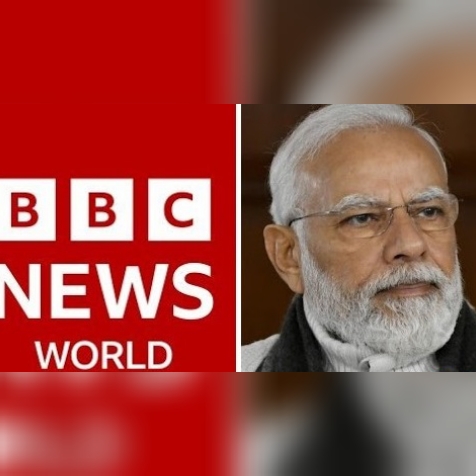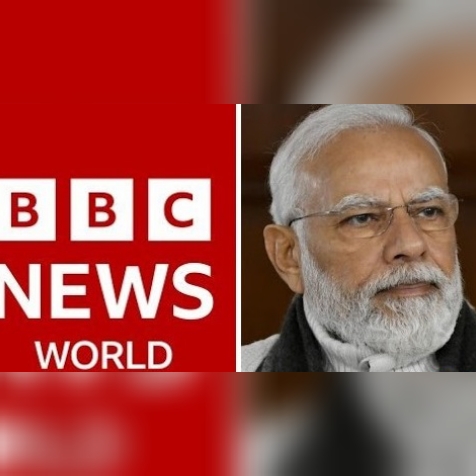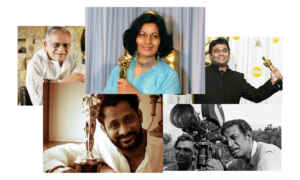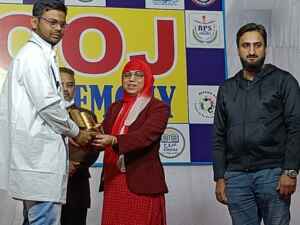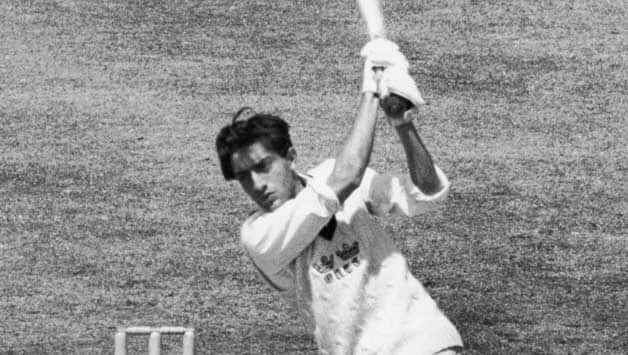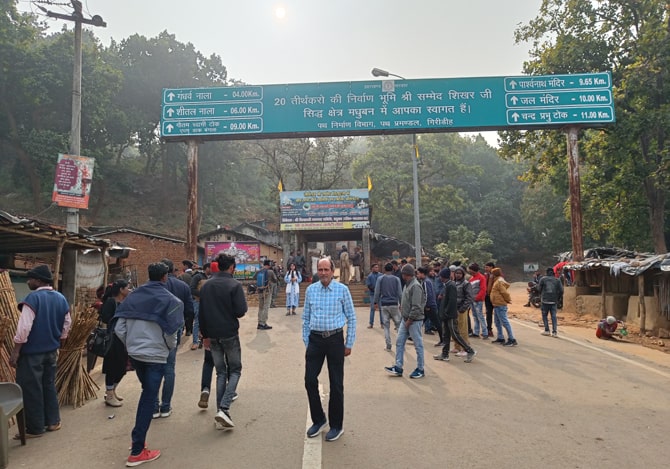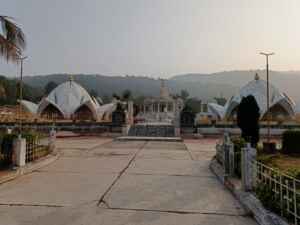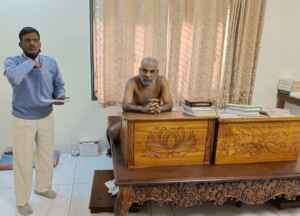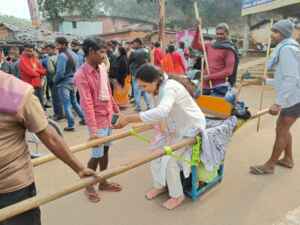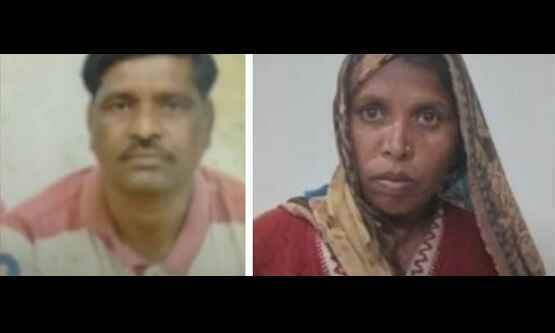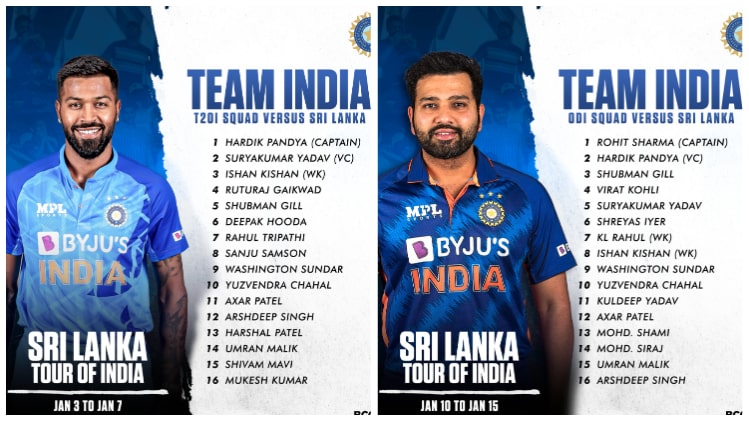Will the controversial BBC documentary help the BJP and Narendra Modi? Will the saffron brigade keep the pot boiling till the next General Election to create a new narrative?
Both the parts of BBC documentary India: The Modi Question has created an uproar in the country though it has not been screened officially. The government has asked Twitter and YouTube to block the link to the documentary.
Any attempt to screen the documentary exploring the politics of Narendra Modi and the Bharatiya Janata Party after the Gujarat riots of 2002 has been muzzled.
After the JNU Students Union declared to screen the documentary, the university administration issued a notice threatening strict disciplinary actions against those who dared to violate its dictate and get involved in the screening.
When the students of the reputed central university gathered to watch it, the electric current went off. The discom ruled out an outage and made it clear that there was no paucity of the current. Another central university in the capital, Jamia Millia Islamia, called the police and did not allow any student to enter the campus to stop the screening.
Why is the government or those closer to the ruling dispensation so afraid of the documentary?
There is no startling revelation, nothing new, nothing that has not been reported earlier.
Those opposing the documentary accuse the BBC of being biased.
Really?
Ex-BJP MP Swapan Dasgupta and an office bearer of the youth wing of the saffron party have been quoted copiously. They have defended the party, the government and the leader. Dasgupta has gone to the extent of saying that there was a conspiracy to finish off Modi, politically.
The BBC has used the old Narendra Modi interview, taken by Jill McGivering. The then-Gujarat CM bluntly told her that the BBC had no right to interfere in the functioning of the government. He also said to her that Britain has no right to talk about human rights, though the BBC does not represent Britain or the UK government.
So, the charges of being biased and lopsided are baseless.
And what about the accusations of imperialistic motive and colonial mindset for making this documentary?
The BBC documentary is based on a report prepared by the British Foreign Office. It also uses a bite of the then-UK Foreign Secretary Jack Straw.
The British Foreign Office has been accused of making a false report on Weapons Of Mass Destruction in Iraq just before it joined the US bandwagon and destroyed Saddam Hussein’s regime.
But can it be said that the Gujarat riots did not occur or that the Muslims were not killed?
What the British Foreign Office said had been said a number of times before.
The BJP and its outfits are trying their best to not allow screening of India: The Modi Question anywhere.
By doing this, they are creating a new narrative, a narrative of an international conspiracy to defame the Hindu religion, India and its leader.
The saffron brigade may keep the pot boiling till the next general election to be held in 2024. It may further consolidate its vote bank.
But this documentary has the potential of damaging the image of the Indian Prime Minister.
Most international human rights groups have criticised Modi and his government for reasons other than the Gujarat riots.
The CAA, the NRC and the treatment of Muslims in the country have alarmed them. Amnesty International, the Human Rights Watch group of the US, the United Nations Human Rights Council and other groups have slammed India and expressed their concerns many times.
India has been condemned at the meetings of the UNHRC and other UN agencies. Even the Gulf Co-operation Council and friendly nations like Iran, and the United Arab Emirates have criticised it.
European Union members and friendly countries like France, the UK and Germany have too slammed India under the leadership of Modi.
The image of India has changed over time during the rule of the saffron party. Earlier it has been known as a secular, liberal, vibrant democracy. That image has been dented and India stands wounded.
Now India is seen as a country where Islamophobia is on the rise, people are lynched for eating beef and their religious places are attacked.
When the entire Muslim world, particularly the Middle East rose in arms at the obnoxious comment on Prophet Muhammad by the then BJP spokesperson Nupur Sharma, it was not just the comment. It was the image of Islamophobia and persecution of Muslims that made them upset.
The issue of the BBC documentary was raised in the British House of Commons and PM Rishi Sunak backed his Indian counterpart. He said that he did not believe the documentary.
The western world is silent or in support of Modi. These are the same countries that have backed the military dictatorship of Pakistan and countries in Latin America and Africa. The same countries are now backing Modi.
China has emerged as the main challenger to the US hegemony and is poised to replace it as the superpower of the world. It is to be countered and checked in control.
India can do it effectively. Delhi can provide a counterweight to Beijing in the South China Sea, the Indo-Pacific region and the politics of Southeast Asia.
The entire western world and most other countries are silent due to geopolitical compulsions.


